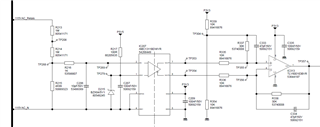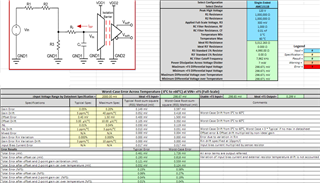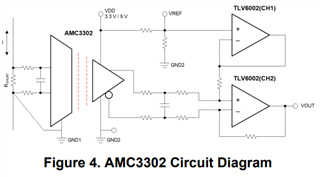Other Parts Discussed in Thread: TLV6001, TLV6002, AMC1301, AMC1100, AMC3330, AMC1350, AMC1300,
The following circuit seems to be highly temperature dependent:
0°C ==> 116,5V
22°C ==> 115,3V
60°C ==> 112,1V

I used the AMC Voltage Sensing Calculator.xlsx and it gives me maximum 0.29% error over 0...60°C.
All resistors are 0.1%/25ppm/°C types. Any ideas?
Regards, Martin



